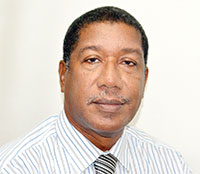IN dentistry, as in medicine, pain and infection are often emergencies in every sense of the word. An emergency is an unforeseen situation that requires immediate action.
Since these emergencies may develop from seemingly ordinary circumstances, pain and infection control will be discussed from routine and emergency standpoints.
Pain of an emergency nature is more likely to occur in the dental practice because of infections, trauma, and temporomandibular (jaw) joint or occlusal (biting) disorders. Obviously, the first consideration in pain control is to eliminate the cause of discomfort and institute indicated local and systemic therapeutic measures. Analgesics (painkillers) are then employed to alleviate pain until the direct treatment has eliminated the cause.
Whenever the dentist considers prescribing an analgesic, he recalls certain clinically significant factors about pain itself. One of the most important considerations here is the psychological aspects of pain.
A basic regard in selecting a pain killer for any case is to match the analgesic’s potency against the pain’s severity. In this respect, one must never lose sight of the fact that the patient’s psychological makeup is an extremely important factor in selecting the proper analgesic.
Pain has two components: perception and reaction. Healthy individuals appear to have the same capacity to perceive pain, but their reaction to what they perceive may vary widely. Discomfort that may require no drug in one patient may require aspirin in another and even codeine, meperidine, or morphine in others. Therefore, a dentist’s relative knowledge of his patient is of considerable value.
A predisposition towards a greater reaction to pain has been said to be associated with patients with one or more of the following characteristics: emotional instability, fatigue, youth, female sex and fear and apprehension. It is well known that many individuals will obtain greater benefit from an analgesic if they expect it to be effective or if they have found it to be effective in the past. The clinician should assert his confidence that a particular agent will give prompt relief.
The confidence the patient has in his dentist will then be conveyed to the drug.
For a knocked-out permanent adult tooth, always keep it moist. Try placing the tooth back in the socket without touching the root if you can. If that is not possible, place it in between your cheek and gums, or in milk and get to the dentist right away. For cracked teeth, or if you should bite your tongue, lip or cheek, wash with warm water to clean the area, if necessary, then apply a cold compress to help prevent swelling.
Mild to moderate pain of dental origin can usually be controlled by aspirin (200 mg every four hours). A similar Acetaminophen (Tylenol) or ibuprofen dose should be equally effective. These drugs provide an additional antipyretic (eliminating fever) effect. Acetaminophen is particularly useful in cases of allergy to aspirin and where gastrointestinal bleeding problems contraindicate the use of aspirin.
Strong painkillers include Talwin, Pentacine HCL, Demerol and morphine sulfate. These drugs, however, all have adverse potentialities and side effects. One must, therefore, always consider whether or not taking a strong painkiller is worth it, bearing in mind the side effects. So, while no one obviously likes pain, special effort should be taken to avoid it by preventing tooth decay, etc.


.jpg)











